"Diamond" became a "Star"
Sight from orbit
Is it easy to spot enemy ships in the oceans? At the height of the Cold War, this task was very difficult. The real way out for the USSR was the space surveillance system. Already in the mid-60s, the first Soviet "Robots-spies". For example, electronic intelligence satellites (US-A, US-P), created at the Design Bureau of Vladimir Chelomey, could "sweep" the World Ocean twice a day and recognize not only the coordinates of the enemy, but also the composition of the ship group, direction These were the world's first spacecraft operating on a nuclear power plant.
At about the same time, photo-reconnaissance aircraft of the Zenit type, developed in Sergey Korolev OKB-1, were launched. However, the percentage of successful shots they had was small.
- Often the capsules with cassette tapes "on the machine" landed almost empty: on the film you could only see dense clouds. At the same time, even successful shots made in good weather did not always suit the military, as the camera had too low a resolution, ”said Vladimir Polyachenko, the former lead designer of the Almaz program at the TsKBM (now NPO Mashinostroeniya). - Therefore, it was decided to bet on people who could assess the situation on Earth and press the shutter of a powerful camera at the right time.
"Stuffing" for spy
So in the Chelomey Design Bureau a project of a secret orbital manned station "Almaz" appeared. Mass - 19 tons, length - 13 meters, diameter - 4 meters, orbit height - about 250 km. Estimated work time - up to two years. In the nose compartment, sleeping places were supposed for two or three crew members, a dining table, lounge chairs, and portholes. And the central working compartment was literally “crammed with” the most advanced “spy” technologies. Here were located the control panel for the commander and the location of the operator control survey. There were also television surveillance systems, a high-resolution long-focus camera and a semi-automatic film processing system. Plus, an optical sight, an infrared instrument, a circular periscope ...
Soviet "spybots" were the world's first spacecraft operating on a nuclear power plant.
“The periscope was set the same as in a submarine, but it was very useful in space,” cosmonaut Pavel Popovich recalled. - We, for example, saw the Skylab periscope (the first and only US orbital station. - Editor's note) at a distance of 70-80 km.
The third compartment was a docking station for a transport supply ship (TKS), which could deliver five times more payloads than the Soyuz or Progress. Moreover, thanks to its powerful thermal protection, its returnable apparatus was reusable, it was actually used three times, and it could have been used up to ten times!
But the astronauts launched a special information capsule from orbit to Earth to transfer the captured cassettes. She fired from the launch chamber and landed in a strictly specified area on the territory of the USSR. The resolution of the images thus obtained is a little more than a meter. In terms of quality, they are quite comparable with the frames provided by modern Earth remote sensing satellites.
“In the General Staff and the Main Intelligence Directorate, they were amazed at the clarity and detail in these photographs,” says Vladimir Polyachenko. - For example, Popovich and Artyukhin fixed real missile bases in America. There everything could be considered: the type of equipment, its readiness for combat use. Is that the numbers on the cars were not available.
But sometimes it was necessary to transfer information urgently. Then the astronauts right on board showed the film. On the TV image went to Earth.
Did the gun shoot?
Perhaps the most secret system of the station is Shield-1. This is a 23mm fast-firing aviation gun design Nudelman, modernized and installed in the bow of the "Diamond". What for? In the early 1970s, the United States announced the start of work on the Space Shuttle: these ships could return large-mass spacecraft from orbit to Earth. The parameters of the cargo compartment of the shuttles were in good agreement with the dimensions of the Diamond. And there were real fears: what if the Americans in their "shuttle" fly up to our station and abduct it?
Closing a project was a big mistake. If the program were implemented further, we would now have a different position in space
The system "Shield-1" is still classified, but the details of this experimental weapons became known to reporters.
“I attended the ground tests of the cannon: this is a terrible crash, a powerful automatic line-up,” says Vladimir Polyachenko. - We were afraid that the shooting in space would affect the psyche of astronauts. Because the command "fire" was given only after the crew left the station. Vibration, noise, feedback - everything is fixed within acceptable limits. And at the next station we planned to suspend the shells of the space-to-space system. Then this idea was abandoned.
The sky in "Diamonds"
50 years ago, in 1967, a commission from 70 of the most authoritative scientists, designers and officials of the Ministry of Defense approved the draft of the Almaz rocket and space complex. And already in 1971, the Proton launch vehicle launched the first Salyut-1 station in the world. Then in V.P. Mishina had to modify this project into a civilian version and remove all spyware. And in 1973, the real military "Salyut-2" (the "Almaz-1" was called for cover) was launched. But on the 13-th day of the flight there was a depressurization of the compartments, and the station collapsed from orbit.
Salyut-3 (Almaz-2) was more fortunate in 1974: he stayed in 213 for 24 days, of which astronauts worked there: commander Pavel Popovich and flight engineer Yuri Artyukhin.
- They were specially “trained” to define the goals and purposes of ground objects. For example, to see from orbit, the farm in front of you and whether the missile base - says Vladimir Polyachenko. - The astronauts had to work with the most complex photographic equipment, process the film, fit the capsule ...
For psychological relaxation, open radio channels transmitted music from the MCC to the station, broadcasts, and telephone conversations were available. One day a woman even got through to the station ... through the usual long-distance. How and why this could happen is still a mystery.
The last manned station of the Almaz project, Salyut-5, was launched in 1976. She was in orbit 412 day. The first crew, Boris Volynov and Vitaly Zholobov, worked for 49 days. The second - Victor Gorbatko and Yuri Glazkov - 16 days ...
According to experts, the closure of the project "Diamond" would have been a mistake: if the program were implemented further, we would now have a different position in space.
Heritage "Almaz"
“The Almaz station, which includes a module with a volume of 90 cubic meters with ergonomically equipped working places for a crew of three, is still relevant today,” says pilot-cosmonaut, head of the Star City Valery Tokarev. It allows for a long time to work effectively in space both in low-Earth orbits and during flights to nearby planets or asteroids.
By the way, a significant part of the International Space Station is the heritage of Almaz. It was from him that the service module of the ZS Zvezda inherited the hull design. And the Zarya module was created on the basis of a multi-purpose transport supply ship platform.
In 2018, the renewed pavilion "Cosmos" will open in Moscow at VDNH. There will be presented not only declassified materials on the program, but also the real automatic station "Almaz-1".
By the way
The world's first anti-space defense system based on maneuvering satellites equipped with homing heads was also developed under the leadership of Vladimir Chelomey. The Satellite Fighter was designed to intercept space targets and destroy them.
The first launch is in 1963. And in 1978, the complex was put into service and was on alert until 1993. “This drone could change the height and plane of the orbit. With the help of a radar head, he aimed at a spy satellite, blew up his combat units, and a bundle of fragments hit the enemy,” Vladimir Polyachenko said. “At that time, this development stopped the space arms race. All documentation there are live samples, and technology can now be restored fairly quickly. "
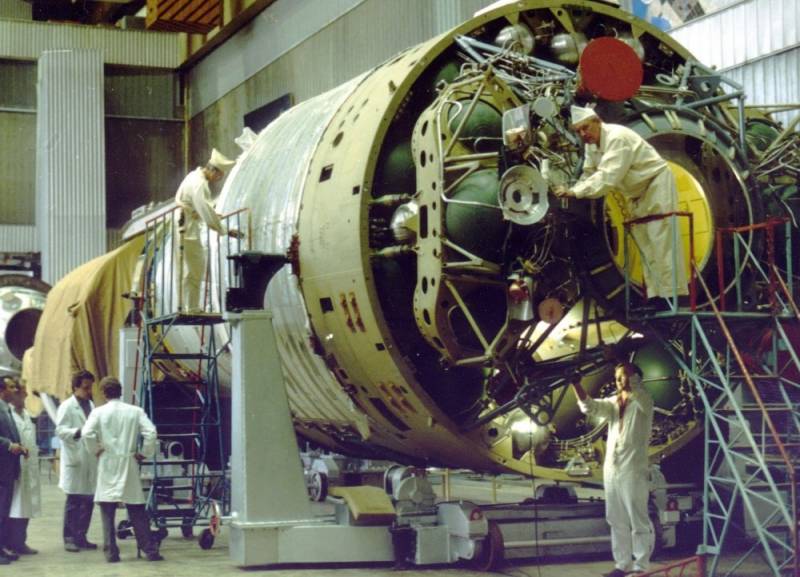
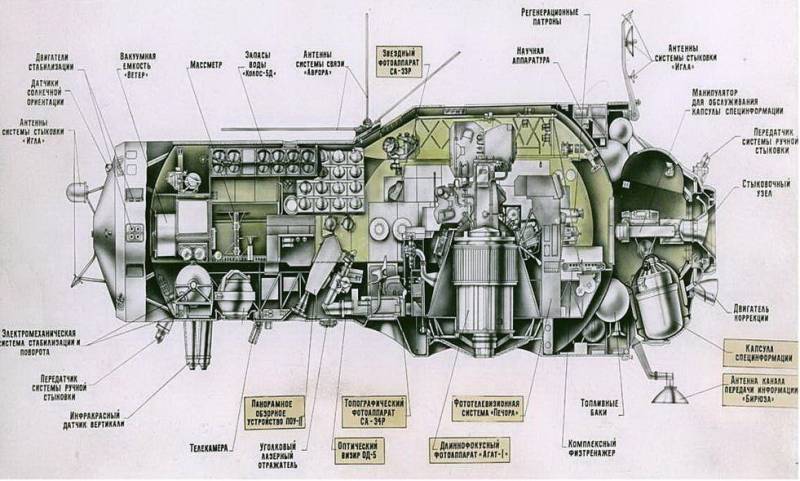


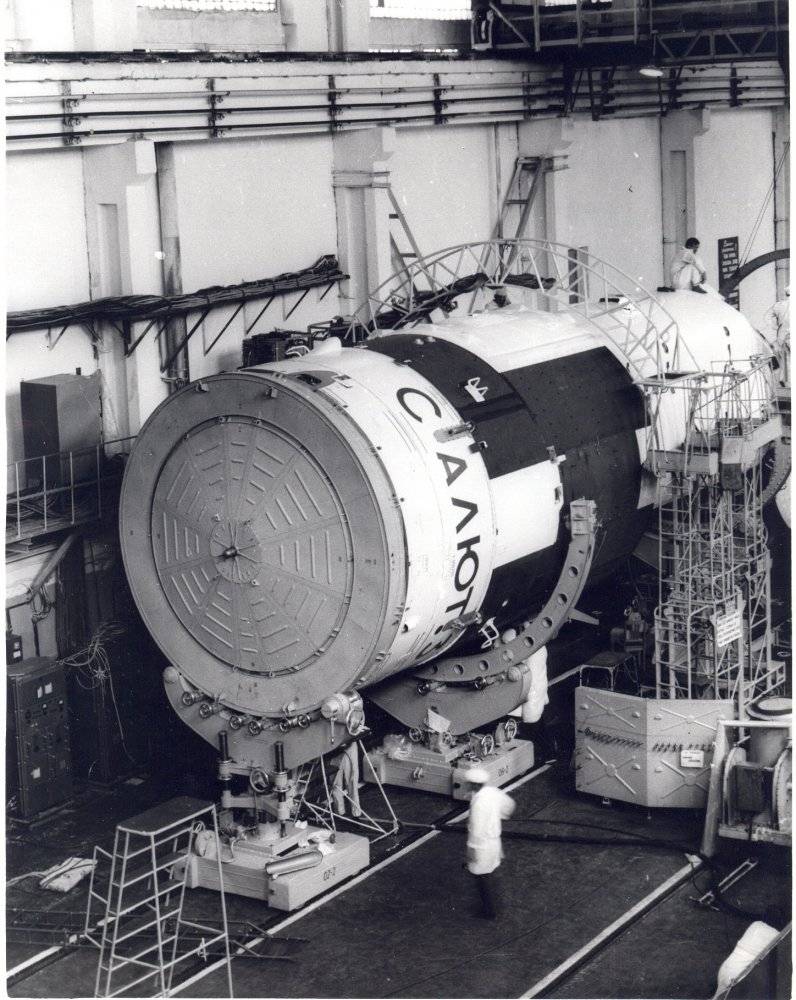
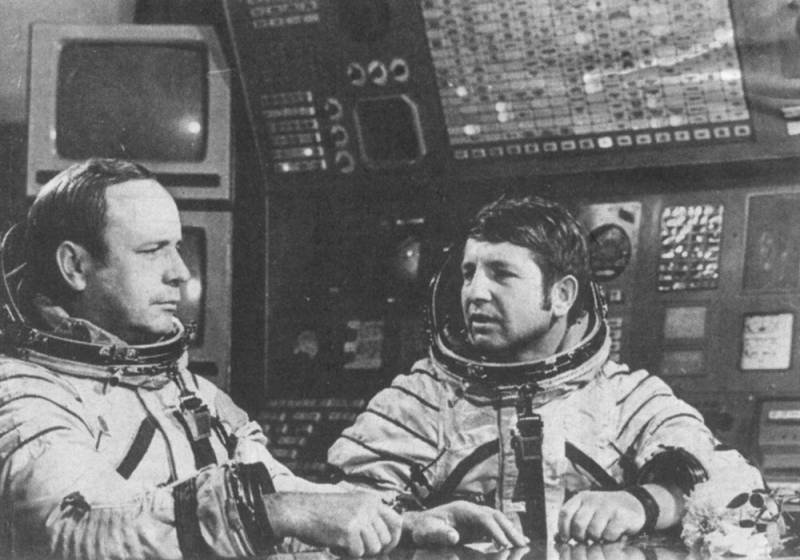
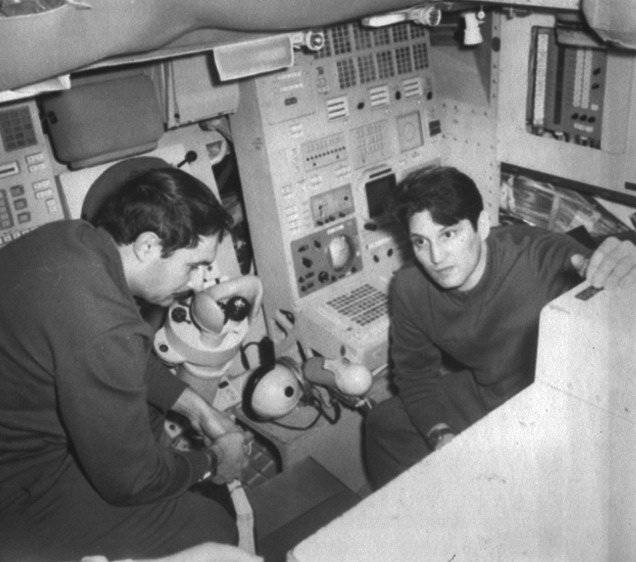
Information